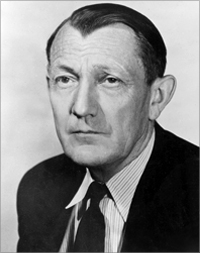Charles Lauritsen
This article includes a improve this article by introducing more precise citations. (March 2024) ) |
Charles Lauritsen | |
|---|---|
 | |
| Born | Charles Christian Lauritsen April 4, 1892 Holstebro, Denmark |
| Died | 13 April 1968 (aged 76) |
| Nationality | Denmark USA |
| Alma mater | Odense Tekniske Skole Caltech |
| Known for | X-ray therapy, nuclear physics |
| Scientific career | |
| Fields | Physics |
| Institutions | Caltech |
| Doctoral advisor | Robert A. Millikan |
| Doctoral students | H. Richard Crane William A. Fowler |
Charles Christian Lauritsen (April 4, 1892 – April 13, 1968) was a Danish-American physicist.[1]
Early life and career
Lauritsen was born in
In 1926, Lauritsen attended a public lecture by
In 1928, he and Ralph D. Bennett developed X-ray tubes of exceptionally high voltage. These tubes were then used for radiation therapy of cancer patients in the Kellogg Radiation Laboratory, built as a treatment clinic in 1931. Sigrid Lauritsen, who was one of the first female graduates of the University of Southern California medical school, worked in the clinic as a radiologist.
In 1932, he converted one of his X-ray tubes into an accelerator of protons and helium ions and began to study nuclear reactions. In 1934, Lauritsen and H. Richard Crane used a sample of recently discovered deuterium, obtained from G.N. Lewis at Berkeley, to generate neutrons with which they made the first accelerator-produced artificial radioactivity. He later measured the radiation produced when a positron and an electron annihilate each other. One of his most significant discoveries was to show that protons could be captured by a carbon nucleus, releasing gamma rays. This radiative capture process was applied to the study of the nuclear processes at the heart of a star, and the production of the heavier elements. In 1939, the laboratory ceased to do medical therapy and concentrated on nuclear physics. (Lauritsen was director of the laboratory from its inception until he retired in 1962.)
In 1937, he invented a radiation detector called the Lauritsen electroscope, widely used as
Weapons development
In 1940, more than a year before the U.S. entered
He continued his weapons work in the years following the war, and much of his work was classified. Among the projects in which he participated were
After a lengthy struggle with cancer, he died on April 13, 1968, aged 76.[where?]
Awards and honors
- Elected to the Royal Danish Academy of Sciences and Letters, 1939.
- Elected to the United States National Academy of Sciences, 1941.[2]
- Appointed Commander of the Order of Dannebrog, 1953, by the King of Denmark.
- Elected to the American Philosophical Society, 1954.[3]
- President of the American Physical Society, 1951.
- Awarded the Tom W. Bonner Prize, 1967.
- Awarded an honorary Doctor of Laws degree by UCLA, 1965.
- The crater Lauritsen on the Moon is named after him.
- Awarded the Medal for Merit by President Harry_S._Truman in 1948.
References
- .
- ^ "Charles Lauritsen". www.nasonline.org. Retrieved January 25, 2023.
- ^ "APS Member History". search.amphilsoc.org. Retrieved January 25, 2023.
Sources
- William A. Fowler, "Charles Christian Lauritsen", 1969, in NAS Biographical Memoirs
- Charles H. Holbrow, "Charles C. Lauritsen: A Reasonable Man in an Unreasonable World", Physics in Perspective, vol. 5, 419-472, 2003.
- Knud Jakobsen, "Danskeren bag bomben" 2013 (in Danish, catalog entry)
